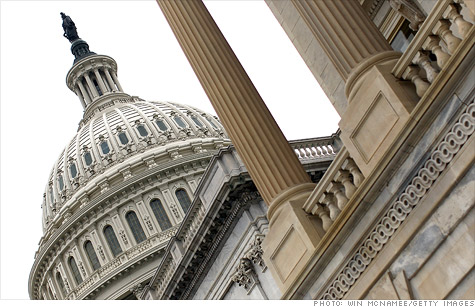Search News

Lawmakers often lament the fact that such a high percentage of Americans end up owing no federal income tax. But intentionally or not, they set it up that way.
NEW YORK (CNNMoney) -- It's a provocative fact about the tax code: Nearly half of U.S. households end up owing no federal income tax.
But it's not surprising given the addiction to tax breaks by both Democrats and Republicans, and the fact that the U.S. tax code is set up to be progressive.
"There's nothing nefarious going on here," William Gale, co-director of the independent Tax Policy Center, said on a call with reporters Wednesday.
Intentionally or not, Congress set it up this way.
Over the years, lawmakers have increased the number of non-payers by enacting reams of tax breaks -- such as tax credits for work, kids and education. And the Bush tax cuts, first passed more than a decade ago, expanded many of them.
Then lawmakers approved temporary tax breaks after the 2008 financial crisis to stimulate the economy, and that expanded the rolls even more, said Robert Greenstein, president of the liberal Center on Budget and Policy Priorities.
The Tax Policy Center estimates that for tax year 2011, 46% of households will end up owing nothing in federal income taxes.
The percentage was closer to 40% before the recession, Greenstein said.
Looking ahead if the Bush tax cuts are allowed to expire next year, the percentage of non-payers could drop to 36%, said Roberton Williams, a senior fellow at the Tax Policy Center.
While the Zero Tax Club includes some very high-income households, it is made up disproportionately of low- and lower-middle-income households.
They, too, may benefit from a bevy of tax breaks, such as tax credits for work and kids. But for many, those types of breaks aren't the biggest reason why they end up in the non-payer group.
Say lawmakers stripped out all tax breaks except those most elemental to a progressive code -- such as the standard deduction and personal exemption, which exempt subsistence-level income and dependents. Even then, about 23% of households would still end up owing nothing in federal income taxes, according to Tax Policy Center research.
In other words, a couple with two kids, earning less than $26,400, would get an $11,600 standard deduction and four exemptions worth $3,700 each, reducing their taxable income to zero, Williams noted in the blog TaxVox.
But if payroll taxes are counted, the number of non-payer households drops precipitously -- to an estimated 18% in 2011.
That's because payroll taxes, which fund the big entitlement programs, hit low-income households harder than most since 100% of their income is subject to them. High-income filers pay a lower percentage of their income in payroll taxes since wages subject to the Social Security tax are capped at $110,100.
Most of those 18% of households that owe neither federal income nor payroll taxes are elderly or had income under $20,000, Williams said.
But even then, they still end up paying something in taxes. Once sales taxes as well as state and local income taxes are thrown into the mix, virtually no household in America would qualify for the non-payer group. ![]()

Carlos Rodriguez is trying to rid himself of $15,000 in credit card debt, while paying his mortgage and saving for his son's college education.
| Overnight Avg Rate | Latest | Change | Last Week |
|---|---|---|---|
| 30 yr fixed | 3.80% | 3.88% | |
| 15 yr fixed | 3.20% | 3.23% | |
| 5/1 ARM | 3.84% | 3.88% | |
| 30 yr refi | 3.82% | 3.93% | |
| 15 yr refi | 3.20% | 3.23% |
Today's featured rates: